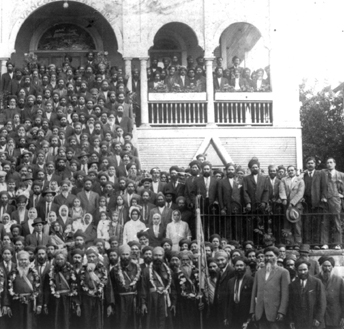
|
This was Canada, the end of the Sikhs’ long journey. It was a new land and it appeared strange at first. The newcomers would
land and join their loved ones in either Victoria or Vancouver, both of which had Sikh communities in the early days. The
Vancouver Sikh temple on West 2nd Avenue was built in 1908 by Mrs. Dhan Kaur Johal’s husband, Chanan, and the other
pioneers: " Our elders built this temple by carrying rocks in baskets on their heads to clear the land. They moved huge rocks by
hand, going to great pains to level and prepare the land for construction. There was a lot of bush and forest that had to be
cleared first, big huge trees cut and cleared away by hand. It was a lot of work but they built this temple with pride so that we
would have a place of our own here. " The Victoria Temple was built soon after in 1912. A small Sikh temple was established in
Paldi, on Vancouver Island, in 1918, by the Mayo Lumber Company. On the mainland, in Abbotsford and New Westminster,
two temples were built in 1912 by the Sikh community. At Fraser Mills, there was a company-built temple. Temples were also
built in Nanaimo and Golden.
" There were only three or four women in this area then. Four ladies came on the boat with me, so that made a total of eight in 1921. Then they came in ones and twos. The infusion of the new Sikhs was a long-awaited and welcome event. British Columbia’s Sikh community saw the arrival of their women and children as their future. The age and gender imbalance would soon be corrected. The temple played an important role in helping the newcomers. On landing, it was usually their first stop. Here they could seek spiritual strength and salvation. They would thank God for their safe journey, offer a donation, eat a meal and check in with the temple officials. Here they could connect with relatives and friends who would find them housing and work. Accommodations were also available until such time as the newcomers could establish themselves. Soon after landing, the routine of " Canadianization " usually began,
|
cont...







